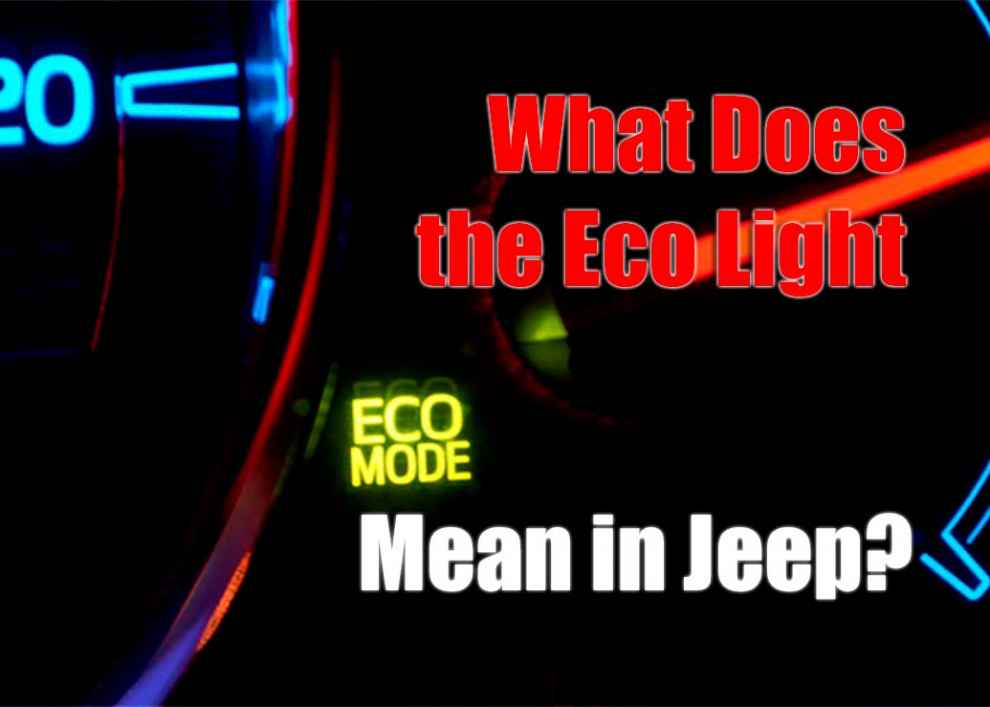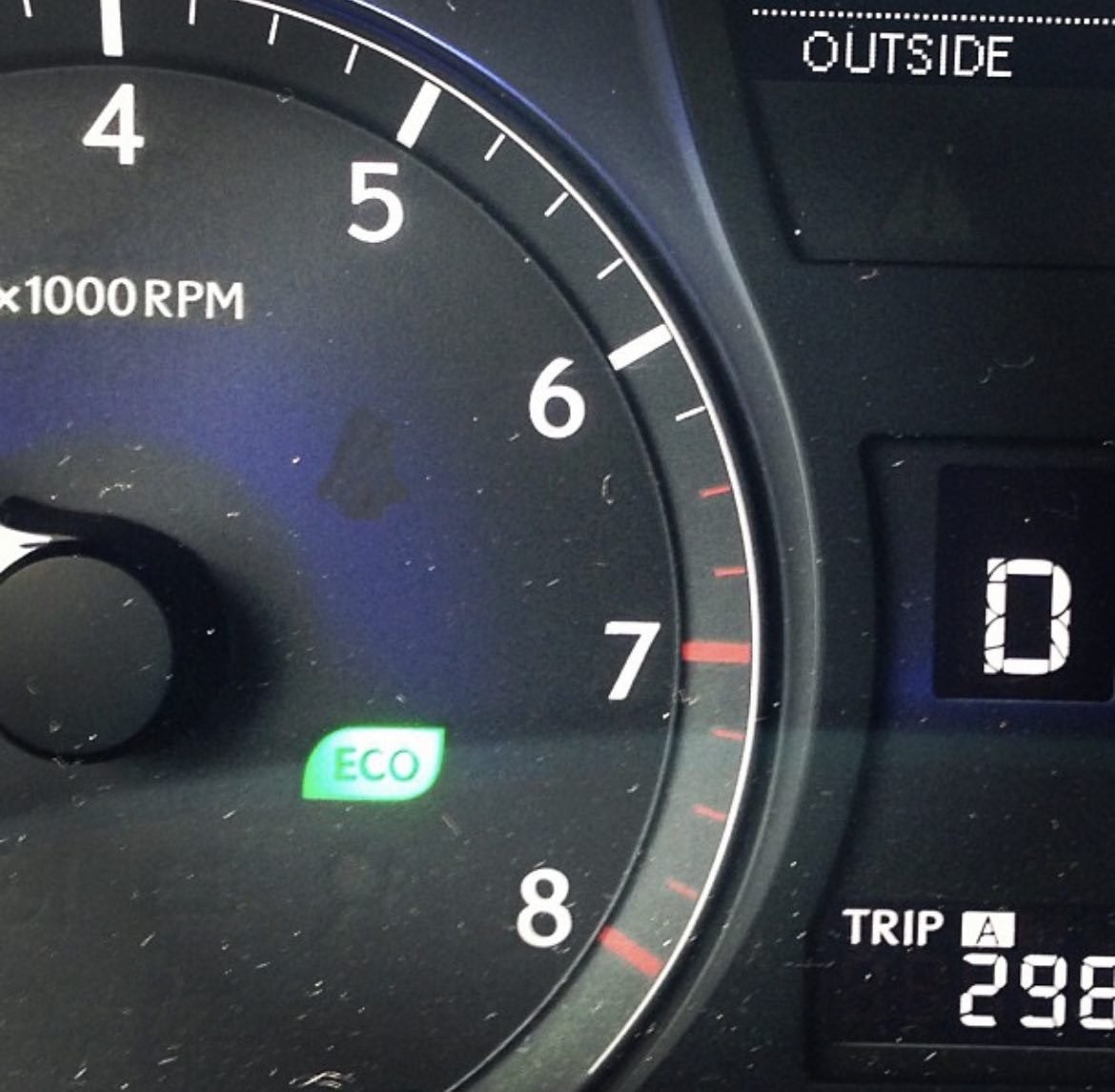Every vehicle has different signals and indicators that help the driver to understand what’s happening inside the car, the Jeep is not an exception. One of these notification lights is the Eco light, which can tell you a lot about your Jeep’s performance. This article will discuss what this Eco light means, how it works, common problems associated with it, and ways to diagnose issues with it.
What Does the Eco Light Mean?
The Eco light in a car is a dashboard indicator that signifies activating an eco-friendly driving mode or feature. It is designed to encourage fuel-efficient driving habits and optimize the vehicle’s performance for better fuel economy. The Eco light works by adjusting various vehicle settings to promote efficiency. When the driver engages in the eco-friendly mode, the Eco light illuminates, indicating that the vehicle is operating in a mode that prioritizes fuel efficiency. This mode may modify throttle response, transmission shifting patterns, and other parameters to promote smoother acceleration, gentler braking, and maintain consistent speed. By adopting these fuel-saving practices, drivers can make the most of the Eco mode and achieve better fuel economy. The Eco light serves as a visual reminder to the driver to drive in a manner that maximizes efficiency, reducing fuel consumption and minimizing the vehicle’s environmental impact.
Common Problems with the Eco Light
While the Eco light in a car is designed to promote fuel-efficient driving and generally functions smoothly, a few common problems can be associated with it.
-
Flickering Eco Light: One common problem with the Eco light is flickering or uneven illumination. It usually occurs when there’s an issue with the power supply or a glitch in the car’s computer system.
-
Unresponsive Eco Light: Sometimes, you might experience situations where your eco mode appears to be on, but the eco light should be more illuminating on your dashboard. Alternatively, it could stay lit even when you’re driving aggressively or at high speeds – both scenarios indicating that your vehicle isn’t reacting appropriately to changes in driving conditions.
-
False Indications: In some cases, drivers have reported seeing their Eco lights illuminate even though they’re not applying any fuel-saving driving techniques–or vice versa.
-
Complete Failure of the Light: Like all bulbs and indicators within your vehicle’s dashboard cluster, the eco bulb can fail after prolonged use and require replacement.
-
Malfunctioning Sensors: The sensors that detect how efficiently you are driving can sometimes malfunction, causing inconsistent lighting of your ECO indicator.
How to Diagnose Issues with Your Engine
If the Eco light on your Jeep starts to behave erratically or indicates problems that aren’t in sync with your driving habits, it could be a sign that something is wrong with your engine. Here are several steps you can take to diagnose issues:
-
Onboard Diagnostic Tool (OBD): Most modern vehicles, including Jeep, have an onboard diagnostic tool to read and interpret fault codes from the vehicle’s computer system. These fault codes can help you identify which vehicle component is malfunctioning.
-
Manual Inspection: Inspect the various components related to the Eco-light system manually, including sensors, power supply units, and wiring. Look out for any damages or wear and tear causing issues.
-
Check Performance Metrics: Some issues might affect your vehicle’s performance – fuel efficiency being one of them. If you notice a drastic drop in mileage despite driving economically or an unexpected increase in fuel consumption, there’s likely an issue with the engine or drive systems.
-
Listen for Unusual Noises: Any unusual noises, like knocking sounds during acceleration or erratic ticking, could signify potential problems within the engine.
-
Vehicle’s Behavior: Monitor your vehicle’s behavior closely on short and long distances, noting any abnormalities, such as decreased power while accelerating or rough idling, which may point towards potential issues needing attention.
Conclusion
In conclusion, the Eco light in a Jeep is a crucial feature that promotes fuel-efficient driving. By understanding what it signifies and how it works, drivers can adapt their driving habits for better fuel economy and less environmental impact. However, issues with the Eco light can occur occasionally and could indicate broader problems with your vehicle’s engine or electrical system. Regular maintenance checks, diligent observation of any changes in your vehicle’s performance or behavior, and using onboard diagnostic tools can help you identify potential issues early on. Suppose you experience consistent problems with your Eco light despite implementing possible solutions. In that case, it is advisable to seek assistance from an expert mechanic or technician to diagnose and address the underlying issue appropriately. Understanding your vehicle’s signals is key to maintaining health and ensuring a smooth driving experience.

 Flickering Eco Light: One common problem with the Eco light is flickering or uneven illumination. It usually occurs when there’s an issue with the power supply or a glitch in the car’s computer system.
Flickering Eco Light: One common problem with the Eco light is flickering or uneven illumination. It usually occurs when there’s an issue with the power supply or a glitch in the car’s computer system.
Add Comment